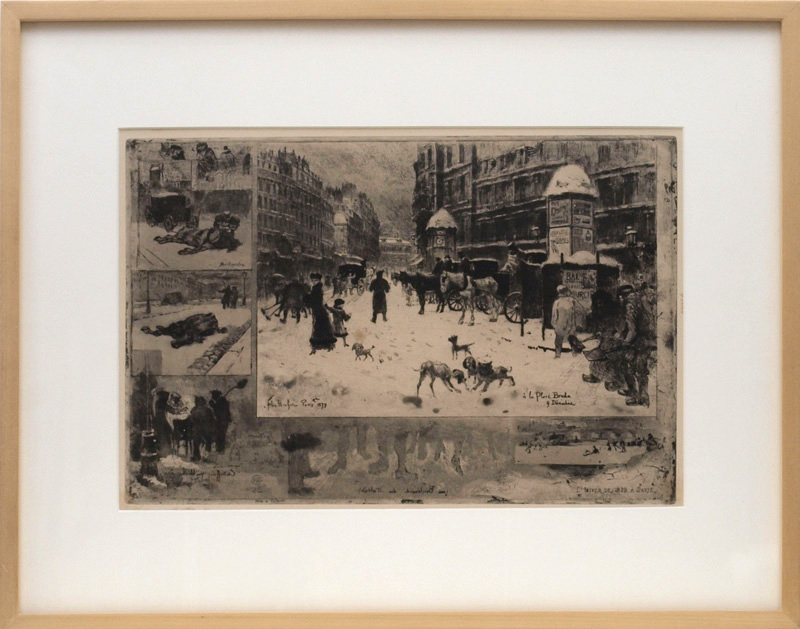In constant experimentation, French printmaker Félix Buhot combined a revolving list of processes, tools, papers, and mediums that ultimately produced groundbreaking discoveries for 19th-century printmaking. Using multiple processes on a single print (such as etching, drypoint, aquatint, and photomechanical reproduction), Buhot sought to achieve the maximum number of images he could derive from a single plate, which he printed on alternative papers, often soaked in coffee or tea. The resulting images (usually atmospheric seascapes and cities of England and France) varied in weather or time of day; a single image could have dark skies in one variation and a misty fog in the next. Buhot called his work “paintings on copper” and was known as one of the best painter-etchers of his time. He is also known for creating “symphonic margins,” integral vignettes that framed his prints.
FELIX BUHOT
